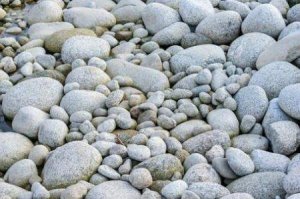高考二轮复习名词专项
一、功能意念项目表
1. 社会交往 ( Social Communications)
(1)问候 (Greetings) (2)介绍(Introduction) (3) 告别(Farewells) (4) 感谢(Thanks) (5) 道歉(Apologies) (6) 邀请 ( Invitation )
(7) 请求允许(Asking for permission )
(8) 祝贺与祝愿 (Expressing wishes and congratulations)
(9)提供帮助 ( Offering help) (10) 接受或拒绝( acceptance and refusal)
(11)约会 ( Making appointments ) (12) 打电话 (Making telephone calls )
(13) 就餐 (Havingmeals) (14) 就医 ( Seeing the doctor)
(15) 购物 (Shopping) (16) 问路(Askingthe way)
(17)谈论天气 ( Talking about weather)
(18) 语言交际困难( Language difficulties in communication )
(19)提醒注意(Reminding and warning)
(20) 警告和禁止 (Warning and prohibition)
(21) 劝告 (Advice) (22) 建议(Suggestions)
2.态度 (Attitudes)
(23) 同意和不同意( Agreement and disagreement) ( 24 )喜欢和不喜欢( Likes and dislikes)
(25)肯定和不肯定( Certainty and uncertainty)
(26) 可能和不可能(Possibility and impossibility)
(27) 能够和不能够 (Ability and inability)
(28) 偏爱和优先选择 (Preference) (29) 意愿和打算(Intentions and plans)
(30) 希望和愿望 (Hope and wish) (31) 表扬和鼓励(Praise and encouragement)
(32) 责备和抱怨 (Blame and complaint) (33) 冷谈 (Indifference)
(34) 判断与评价(judgement and evaluation)
3. 情感 (Emotions)
(35) 高兴 (Happiness) (36)惊奇 ( Surprise ) (37) 忧虑 (Worries)
(38) 安慰(Reassurance) (39) 满意 (Satisfaction) (40) 遗憾 (Regret)
(41) 同情 (Sympathy) (42) 恐惧 (Fear) (43) 愤怒 (Anger)
4. 时间 (Time)
(44) 时刻(Point of time) (45) 时段(Duration) (46) 频度 (Frequency)
(47) 时序(Sequence)
5. 空间 (Space)
(48) 位置 (Position) (49)力向(Direction) (50) 距离 (Distance)
6.存在(Existence)
(51) 存在 (Existence and Non-existence)
7. 特征 (Features)
(52) 形状 (Shape) (53) 颜色 (Colour) (54) 材料 (Material)
(55) 价格(Price) (56) 规格(Size) (57) 年龄 ( Age )
8.计量 (Measurement)
(58) 长度 (Length) (59) 宽度(Width) (60) 高度(Height)
(61) 数量 (Number)
9. 比较 (Comparison)
(62) 同级比较 ( Equal comparison ) (63) 差别比较(Comparative and superlative)
(64) 相似和差别 (Similarity and difference)
10. 逻辑关系 ( Logical relations )
(65)原因和结果 (Cause and effect ) (66) 目的(Purpose)
11. 职业 (Occupation)
(67) 工作 (Job) (68) 单位(Employer)
二、话题项目表
说明:标*号的项目为八级要求
1.个人情况 (Personal information)
(1) Individual data (name, age, date of birth, place of birth, telephone number, address, postal code, e-mail address, ID number, etc. )
(2) Family data (name, age, relationship, etc. )
(3) School data (school, grade, class, teacher, etc. )
(4) Data uses (filling out forms and applications, etc. )
(5) Jobs and career (office worker, worker, teacher, doctor, farmer, driver,official, etc. )
2.家庭、朋友与周转的人 (Family, friends and people around)
(1) Family and relatives (grandparents, parents, brother, sister, aunt, uncle,cousin, son, daughter, etc. )
(2) Friends (close neighbour, schoolmate, classmate, roommate, team-mate,etc. )
(3) Other people (neighbour, local shopkeeper, teacher, colleague, etc. )
3. 周围的环境(personal environments)
(1) Kinds of homes (apartment, house, dormitory, etc. )
(2) Rooms in homes (bedroom, kitchen, living room, bathroom, etc. )
(3) Furniture & home items ( table, chair, sofa, desk, bed, television, etc. )
(4) Schools (classroom, playground, hall, computer room, office, etc. )
(5) Outside (grocery store, book shop, clothing store, market, bank, library,museum, cinema, theatre, park, road, etc. )
4.日常活动 (Daily routines)
(1) Getting ready (time for school, playing, bed)
(2) Dressing, brushing teeth, washing hands and face, taking a shower, etc.
(3) Eating (breakfast, lunch, snacks and dinner)
(4) Daily chores (tidying, sweeping, doing dishes, cooking)
(5) Homework (reading, writing, studying, etc. )
(6) Family time (watching television, going out, visiting, etc. )
5. 学校生活 (School life)
(1) School building (classroom, office, library, washroom, etc. )
(2) School organization (grade, class, subject, break, schedule, etc. )
(3) People (teacher, classmate, schoolmate, cleaner, etc. )
(4) Subjects (Chinese, maths, English, geography, history, etc. )
(5) Activities (sports, extra-curricular involvement, trip, etc. )
(6) Instructions (Please listen, read, get into groups, act, etc. )
(7) Educational methods (preview, review, discuss, presentation, summary)
6. 兴趣与爱好 (Interests and hobbies)
(1) Lessons (music, dance, acting, sport, etc. )
(2) Games (physical games, computer games, sports, etc. )
(3) Hobbies (collecting stamps, coins, dolls, etc. )
(4) Reading (books, newspapers, comics, etc. )
(5) Cultural events (film, theatre, concert, opera, etc. )
(6) Entertainment (listening to radio, watching TV, playing CD, DVD,etc. )
(7) Socializing (having parties, issuing invitations, going for picnics, going sightseeing, entertaining guests, etc. )
(8) Expressing your reactions to these activities
7. 个人感情 (Emotions)
(1) Describing feelings (happy, sad, angry, upset, pleased, proud, lonely, worried, nervous, afraid, etc. )
(2) Expressing emotions (smiling, laughing, crying, shouting, etc. )
(3) Describing facial expressions and gestures
8. 人际关系 (Interpersonal relationships)
(1) People (parent, brother, sister, other family members, friend, neighbour,teacher, etc. )
(2) Social behaviours (greeting, introducing, giving thanks, asking for permission, asking for help, solving problems, dealing with conflizts, etc. )
(3) Getting together (making plans / arrangements, time, date, place, event,etc. )
9. 计划与愿望 (Plans and intentions)
(1) Planning (holidays, social events, travel, further education, jobs, etc. )
(2) Organising ( asking for advice, asking for help, asking for permission,exploring possibilities, expressing needs and wants, etc. )
10. 节假日活动 (Festivals, holidays and celebrations)
(1)Cultural festivals ( Spring Festivals, New Year's Day, Christmas, etc. )
(2) Religious holidays (Christmas, Easter, Ramada, etc. )
(3) Personal celebrations (birthday, anniversary, graduation, etc. )
11. 购物 (Shopping)
(1) Planning (shopping list, needs, wants, etc. )
(2) Products (clothes, groceries, personal items, electronics, etc. )
(3) Selecting (quality, weights, measures, size, colour, style, etc. )
(4) Paying (price, quantity, etc. )
12. 饮食(Food and drink)
(1) Meats (beef, chicken, pork, fish, etc. )
(2) Soups (chicken, tofu, vegetable, etc. )
(3) Vegetables (cabbage, eggplant, etc. )
(4) Staple food (rice, bread, noodles, cake)
(5) Drinks (milk, water, juice, soft drink, coke, alcoholic drinks, beer, wine,etc. )
(6) Fast foods ( sandwiches, noodles, dumplings, hot dogs, hamburgers, chips, etc. )
(7) Snacks (ice cream, chips, etc. )
(8) Eating customs (ways of eating, kinds of food, times to eat, table manners, chopsticks, knife, fork, etc. )
(9) Requesting or offering different foods and drinks
(10) Likes and dislikes (favourite food, favourite drinks, etc. )
(11) Ordering food and/or drinks
13. 健康(Health)
(1) Eating habits
(2) Physical fitness and exercise
(3) Personal hygiene
(4) Illnesses (stomachache, headache, flu, cold, etc. )
(5) Medications
(6) Accidents
(7) Doctors, nurses & hospitals
(8) Describing problems (parts of the body, pains, etc. )
(9) Medical insurance
14. 天气(Weather)
(1) Describing weather (sunny, cloudy, windy, rainy, hot, warm, cold, cool,etc. )
(2) Extreme weather (storms, gales, hurricanes, etc. )
(3) Dressing for the weather ( coat, hat, umbrella, raincoat, windbreaker,etc. )
15. 文娱与体育 (Entertainment and sports)
(1) Movies and theatre
(2) Music and dance (folk music and dance, popular music and classical music)
(3) Team games (football, basketball, volleyball, etc. )
(4) Games of two or four (table tennis, tennis, golf, etc. )
(5) Racing (running, swimming, horse racing, etc. )
(6) International sports events ( Olympic Games, World Cup, Football League, etc. )
(7) Spectators and fans
(8) Physical exercises
16. 旅游和交通(Travel and transport)
(1)Methods of transportation ( walking, cycling, horse riding, taking buses, trains, boats, planes)
(2) Travel (schedules, maps, tickets, fares)
(3) Getting and asking directions (left, right, straight ahead, north, south,east, west, etc. )
(4) Safety rules and warnings (traffic lights, caution, walk, stop, etc. )
(5) Inquiring and making reservations (hotels, tourist spots, etc, )
(6) International travel (passport, visas, expenses, currency, etc. )
(7) Describing a journey
17. 语言学习 (Language learning)
(1) Differences between American English and British English
(2) Language and culture
(3) Language learning difficulties
(4) Attitudes to language and communication
(5) Language learning strategies
(6) Communications repair
18. 自然(Nature)
(1) Plants (green plants, trees, bushes, grass, vegetables, crops, flowers.- etc. )
(2) Animals (farm animals, wild animals, endangered animals, pets, etc. )
(3) Heavenly bodies (The sun, the earth, the moon and stars, etc. )
(4) Describing land (cities, farms, hill, mountains, lakes, rivers, etc. )
(5) Natural disasters (Volcano, earthquake, etc. ) *
19. 世界和环境 (The world and the environment)
(1) Countries and. maps (China, Great Britain, United States, Australia, Canada, New Zealand, Japan, Russia, India, Egypt, Cuba. etc. )
(2) Issues (pollution, land use and quality, population growth, housing.etc. )
20.科普知识与现代技术 (Popular science and modern technology)
(1) Recent inventions, medical advances, technological advances, etc.
(2) Computer science
21. 热点话题 (Topical issues)
(1) Population *
(2) Environmental conservation *
(3) Crime and punishment *
(4) Social differences *
(5) Pollution
22. 历史和地理 ( History and geography)
(1) General knowledge of history and geography about China
(2) General knowledge of history and geography about the world
(3) Historic events
(4) Historical persons
23. 社会(Society)
(1) Nationality and people
(2) Famous people (contemporary)
(3) Law (rules and regulations, traffic codes)
(4) Ways of dressing (types of clothes, daily clothes or dress, situation and dressing)
(5) Names of religions *
(6) Religions and culture *
(7) Customs and culture
24.文学与艺术 (Literature and art)
(1) Forms of literature and art (play, drama, novel, essay, poetry, shortstory)
(2) Famous literary people and artists *





























发表评论 取消回复